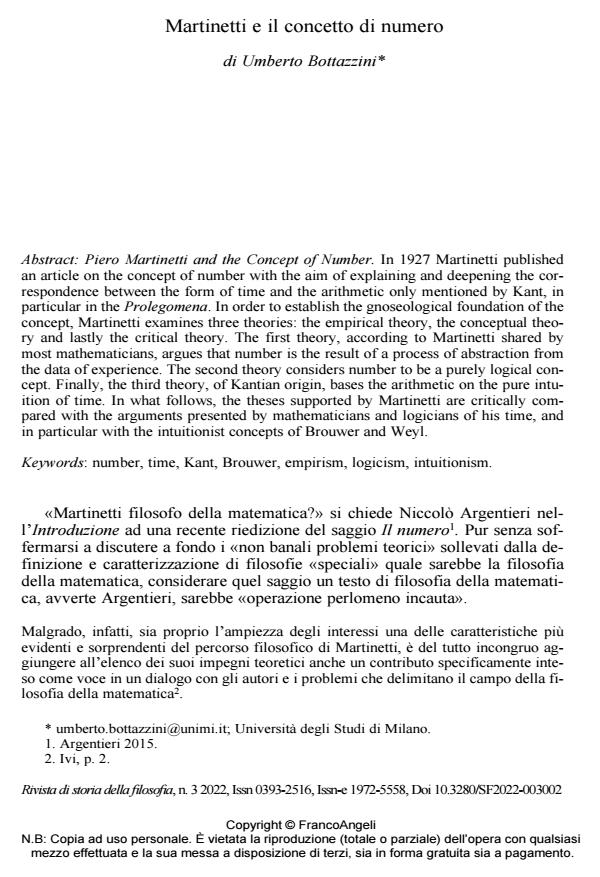Martinetti e il concetto di numero
Titolo Rivista RIVISTA DI STORIA DELLA FILOSOFIA
Autori/Curatori Umberto Bottazzini
Anno di pubblicazione 2022 Fascicolo 2022/3
Lingua Italiano Numero pagine 11 P. 373-383 Dimensione file 167 KB
DOI 10.3280/SF2022-003002
Il DOI è il codice a barre della proprietà intellettuale: per saperne di più
clicca qui
Qui sotto puoi vedere in anteprima la prima pagina di questo articolo.
Se questo articolo ti interessa, lo puoi acquistare (e scaricare in formato pdf) seguendo le facili indicazioni per acquistare il download credit. Acquista Download Credits per scaricare questo Articolo in formato PDF

FrancoAngeli è membro della Publishers International Linking Association, Inc (PILA)associazione indipendente e non profit per facilitare (attraverso i servizi tecnologici implementati da CrossRef.org) l’accesso degli studiosi ai contenuti digitali nelle pubblicazioni professionali e scientifiche
In 1927 Martinetti published an article on the concept of number with the aim of explaining and deepening the correspondence between the form of time and the arithmetic only mentioned by Kant, in particular in the Prolegomena. In order to establish the gnoseological foundation of the concept, Martinetti examines three theories: the empirical theory, the conceptual theory and lastly the critical theory. The first theory, according to Martinetti shared by most mathematicians, argues that number is the result of a process of abstraction from the data of experience. The second theory considers number to be a purely logical concept. Finally, the third theory, of Kantian origin, bases the arithmetic on the pure intuition of time. In what follows, the theses supported by Martinetti are critically compared with the arguments presented by mathematicians and logicians of his time, and in particular with the intuitionist concepts of Brouwer and Weyl.
Parole chiave:Keywords: number, time, Kant, Brouwer, empirism, logicism, intuitionism.
Umberto Bottazzini, Martinetti e il concetto di numero in "RIVISTA DI STORIA DELLA FILOSOFIA" 3/2022, pp 373-383, DOI: 10.3280/SF2022-003002